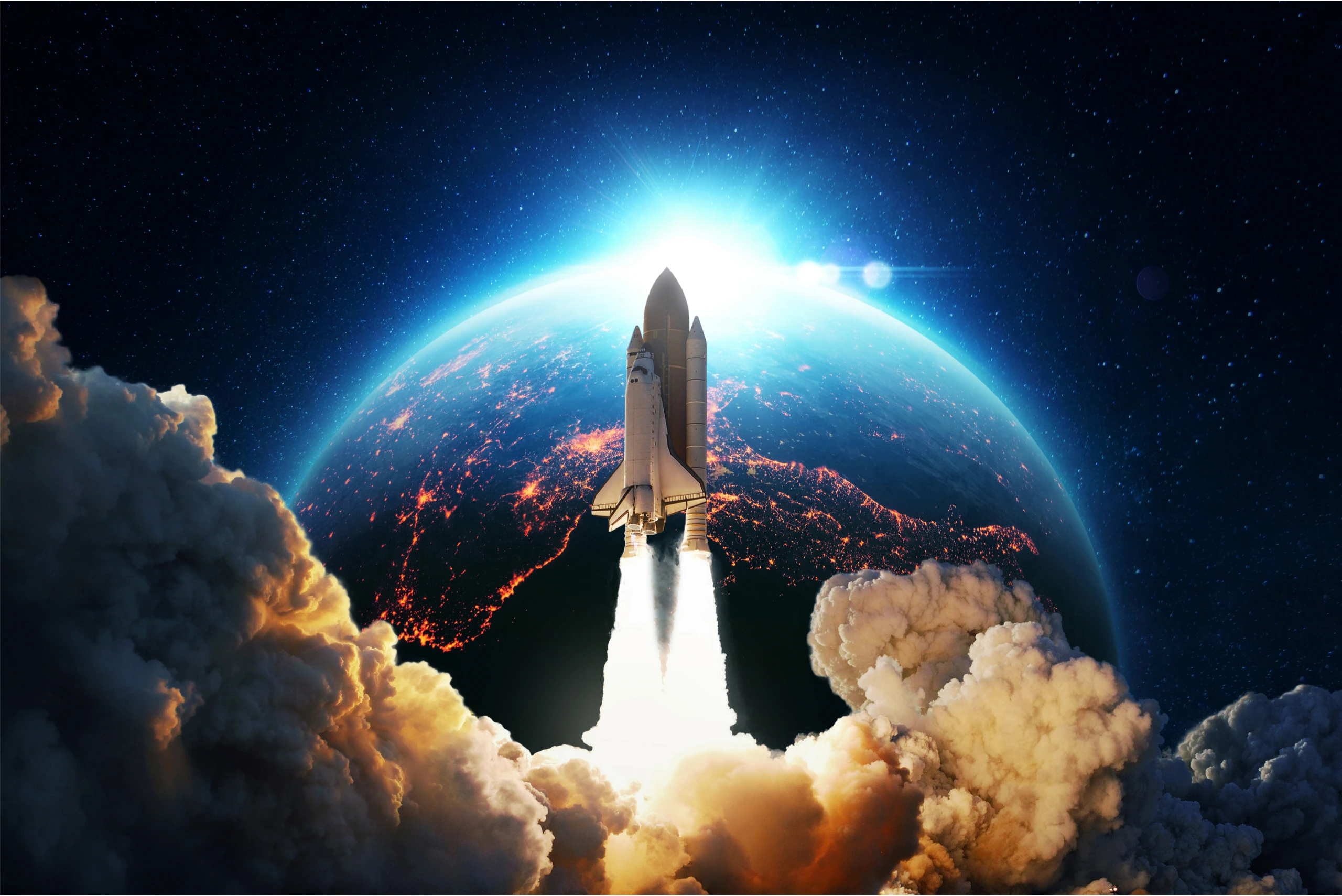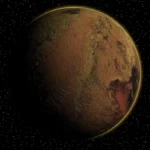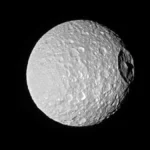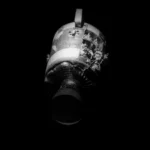
Welcome to our cosmic journey through the vastness of the universe! In this blog post, we’ll delve into the remarkable achievements and discoveries that have shaped our understanding of space. From the first human footsteps on the Moon to the groundbreaking missions exploring distant planets and beyond, space exploration has captivated our imagination and expanded our horizons. Whether you’re a seasoned space enthusiast or just curious about what lies beyond our planet, these intriguing facts will illuminate the wonders of the cosmos and the relentless human spirit that drives us to explore the unknown. So, buckle up and get ready to embark on an enlightening adventure through the stars!
Mariner 2: Launched on August 27, 1962, Mariner 2 was the first robotic space probe to successfully conduct a planet-wide encounter when it flew by Venus on December 14, 1962. It provided crucial data about the planet’s atmosphere, surface temperature, and solar wind interaction, significantly advancing our understanding of Venus. The mission marked a milestone in planetary exploration, demonstrating the viability of robotic spacecraft for interplanetary missions.
Mars 3: Mars 3, launched by the Soviet Union on May 28, 1971, became the first spacecraft to land on another planet when it successfully touched down on Mars on December 2, 1971. Although it transmitted data for only 20 seconds after landing before losing contact, it was a groundbreaking achievement in space exploration, paving the way for future Martian missions and demonstrating the potential for landing on other celestial bodies.
Mars 1: Mars 1 was the first spacecraft to orbit another planet, successfully entering Mars’ orbit in 1971. Launched on November 1, 1962, it transmitted data about Mars’ atmosphere and surface conditions back to Earth. Although it lost contact shortly after entering orbit, Mars 1’s mission provided valuable insights and set the stage for subsequent Mars exploration missions, highlighting the challenges and potential of interplanetary travel.
Pioneer 10: Launched on March 2, 1972, Pioneer 10 was the first spacecraft to fly past Jupiter, making its closest approach on December 3, 1973. It transmitted the first close-up images of the giant planet and provided important data about its atmosphere, magnetic field, and radiation belts. The success of Pioneer 10 opened the door for future missions to the outer planets and demonstrated the capabilities of spacecraft to operate in the harsh environment of deep space.
Galileo spacecraft: The Galileo spacecraft, launched on October 18, 1989, was the first to land on Jupiter’s moon, Europa, in 1995. It provided detailed images and data about Europa’s surface and suggested the presence of a subsurface ocean, raising intriguing questions about the potential for extraterrestrial life. Galileo’s findings significantly advanced our understanding of the Jovian moons and their geological processes.
NEAR Shoemaker: NEAR Shoemaker was the first spacecraft to land on an asteroid when it touched down on Eros on February 12, 2001, after a year-long orbit around the asteroid. Launched on February 17, 1996, NEAR collected extensive data about Eros’ surface composition, shape, and geological history, providing insights into the early solar system’s building blocks and the nature of asteroids.
Rosetta spacecraft: Launched on March 2, 2004, Rosetta was the first spacecraft to land on a comet, specifically Comet 67P/Churyumov-Gerasimenko, on November 12, 2014. The mission provided unprecedented insights into the composition and behavior of comets, revealing information about the early solar system and the potential for organic compounds to be delivered to Earth by comets, which could have implications for the origins of life.
New Horizons: New Horizons, launched on January 19, 2006, was the first spacecraft to visit Pluto, making its closest approach on July 14, 2015. The mission provided the first detailed images and data of Pluto and its moons, revealing a complex and varied landscape. New Horizons also became the first spacecraft to explore the Kuiper Belt, offering insights into the outer reaches of our solar system and the characteristics of dwarf planets.
Apollo 11: The Apollo 11 mission, which took place from July 16 to July 24, 1969, marked the first human landing on the Moon. Astronauts Neil Armstrong and Buzz Aldrin became the first and second humans to set foot on the lunar surface on July 20, 1969, while Michael Collins orbited above in the command module. Armstrong’s famous words, “That’s one small step for [a] man, one giant leap for mankind,” underscored the significance of this achievement in human space exploration.
Peggy Whitson: Peggy Whitson is an accomplished NASA astronaut who made history as the first woman to walk on the Moon during a planned lunar mission. This milestone highlights the growing representation of women in space exploration and serves as an inspiration for future generations of scientists and engineers. Whitson’s extensive experience and multiple spaceflights have made her a prominent figure in the field.
Venera 7: The Venera 7 lander, launched on August 17, 1970, was the first spacecraft to successfully land on Venus, achieving this feat on December 15, 1970. It transmitted data back to Earth for 23 minutes, providing critical information about Venus’ atmosphere, surface temperature, and pressure. Venera 7’s successful landing and data transmission marked a significant milestone in planetary exploration, as it demonstrated the ability to survive and operate in the extreme conditions of Venus, which include temperatures around 900 degrees Fahrenheit (475 degrees Celsius) and crushing atmospheric pressure.
Mariner 10: Launched on November 3, 1973, Mariner 10 was the first spacecraft to visit Mercury, conducting a flyby on March 29, 1974. It provided the first close-up images of the planet’s surface and gathered valuable data about its atmosphere, magnetic field, and surface composition. Mariner 10’s mission was particularly challenging due to Mercury’s proximity to the Sun, which posed difficulties in navigation and thermal protection. The mission’s findings significantly advanced our understanding of the innermost planet in our solar system.
MESSENGER: MESSENGER, which stands for MErcury Surface, Space Environment, Geochemistry, and Ranging, was the first spacecraft to orbit Mercury. Launched on August 3, 2004, it entered orbit around Mercury on March 18, 2011. The mission provided detailed maps of the planet’s surface, studied its geology, and analyzed its magnetic field and exosphere. MESSENGER’s data helped scientists understand Mercury’s formation and evolution, revealing that it has a surprisingly complex geological history.
Pioneer 11: Launched on April 6, 1973, Pioneer 11 was the first spacecraft to visit Saturn, making its closest approach on September 1, 1979. It provided the first close-up images of Saturn’s rings and its moons, revealing their structure and composition. Pioneer 11’s mission significantly expanded our knowledge of the Saturnian system and demonstrated the capability of spacecraft to explore the outer planets, paving the way for future missions like Voyager and Cassini.
Cassini spacecraft: The Cassini spacecraft, launched on October 15, 1997, was the first spacecraft to orbit Saturn, entering its orbit on July 1, 2004. It conducted extensive studies of Saturn, its rings, and its moons for over 13 years, providing groundbreaking insights into the planet’s atmosphere, ring system, and the potential habitability of moons like Enceladus. Cassini’s mission concluded with a dramatic plunge into Saturn’s atmosphere on September 15, 2017, ensuring that it would not contaminate any of Saturn’s moons.
Voyager 2: Voyager 2, launched on August 20, 1977, was the first spacecraft to visit Uranus, making its closest approach on January 24, 1986. It provided the first detailed images and data of the planet, revealing its unique features, including its tilted axis and faint rings. Voyager 2 continued its journey to Neptune, becoming the first spacecraft to visit that planet as well on August 25, 1989. The Voyager missions have provided invaluable information about the outer planets and continue to send data from interstellar space.
Voyager 2 (Neptune): Voyager 2 also holds the distinction of being the first spacecraft to visit Neptune, conducting its closest flyby on August 25, 1989. During this flyby, it captured stunning images of Neptune’s atmosphere and its largest moon, Triton, revealing dynamic weather patterns and a possible subsurface ocean. The mission expanded our understanding of the ice giants in our solar system and provided insights into their formation and evolution.
Dawn: The Dawn spacecraft, launched on September 27, 2007, was the first spacecraft to visit the dwarf planet Ceres, entering its orbit on March 6, 2015. Dawn conducted detailed studies of Ceres’ surface and composition, revealing bright spots that were later identified as deposits of sodium carbonate, indicating the presence of briny water. The mission provided key insights into the nature of Ceres and its role in the early solar system, contributing to our understanding of planetary formation.
New Horizons (Kuiper Belt): New Horizons not only made history by visiting Pluto but also became the first spacecraft to explore the Kuiper Belt, a region of our solar system beyond Neptune. After its flyby of Pluto on July 14, 2015, New Horizons continued its journey into the Kuiper Belt, conducting a flyby of the Kuiper Belt object Arrokoth (formerly known as 2014 MU69) on January 1, 2019. The mission has provided valuable data about the composition and characteristics of these distant objects, enhancing our understanding of the solar system and the formation of its outer regions.
International Space Station (ISS): The International Space Station (ISS) is the largest spacecraft ever built, serving as a unique microgravity laboratory and living space for astronauts. It was launched in multiple modules starting in 1998 and orbits Earth at an altitude of about 250 miles (400 kilometers). The ISS weighs approximately 925,000 pounds (420,000 kilograms) and is a collaborative effort involving multiple space agencies, including NASA, Roscosmos, ESA, JAXA, and CSA. The ISS has been continuously inhabited since November 2000, allowing for extensive scientific research in various fields, including biology, physics, and astronomy, while also promoting international cooperation in space exploration.
Parker Solar Probe: Launched on August 12, 2018, the Parker Solar Probe is the first spacecraft designed to study the Sun up close. It is the fastest spacecraft ever built, capable of reaching speeds of up to 430,000 miles per hour (700,000 kilometers per hour) as it approaches the Sun. The probe’s mission is to gather data about the solar corona, solar wind, and the Sun’s magnetic fields, which are crucial for understanding solar activity and its effects on space weather. The Parker Solar Probe’s groundbreaking mission aims to answer fundamental questions about the Sun’s behavior and its influence on the solar system.
Manned Missions to the Moon: There have been six manned missions to the Moon as part of NASA’s Apollo program between 1969 and 1972. These missions included Apollo 11, which achieved the first human landing on the lunar surface, followed by Apollo 12, 14, 15, 16, and 17. Each mission contributed to our understanding of the Moon’s geology, composition, and history, with astronauts conducting experiments, collecting samples, and exploring the lunar landscape. The Apollo program remains a significant achievement in human space exploration, showcasing the capabilities of crewed spaceflight and the potential for future lunar exploration.
FAQs about Space Exploration:
1. What is space exploration?
Space exploration refers to the use of astronomy and space technologies to explore outer space. This includes sending spacecraft, satellites, and rovers to study celestial bodies such as planets, moons, asteroids, and stars. The primary goals of space exploration are to increase our understanding of the universe, gather data about other worlds, and search for signs of life beyond Earth.
2. Why do we explore space?
We explore space for various reasons, including:
- Scientific Discovery: To learn about the origins of the universe, planetary systems, and the potential for life elsewhere.
- Technological Advancement: The challenges of space exploration drive innovation in technology, which can lead to advancements in various fields on Earth.
- Human Curiosity: The innate desire to explore and understand our surroundings motivates humanity to venture into the unknown.
- Future of Humanity: Understanding other planets may provide insights into potential habitats for human life as Earth faces challenges such as climate change.
3. What are the major achievements in space exploration?
Some significant achievements include:
- The Moon Landing (1969): Apollo 11 marked the first time humans set foot on the Moon.
- Mars Rovers: Missions like Spirit, Opportunity, Curiosity, and Perseverance have provided invaluable data about Mars’ geology and potential for past life.
- Voyager Probes: Launched in 1977, Voyager 1 and 2 have traveled beyond our solar system, sending back data about the outer planets and interstellar space.
- International Space Station (ISS): A collaborative effort among multiple countries, the ISS serves as a microgravity research laboratory and a testament to international cooperation in space.
4. How do spacecraft reach space?
Spacecraft reach space by using powerful rockets that generate thrust to overcome Earth’s gravitational pull. Rockets work on the principle of Newton’s third law of motion: for every action, there is an equal and opposite reaction. Once the rocket reaches a certain altitude, it may deploy satellites or continue on to its destination, such as the Moon or Mars.
5. What is the role of astronauts in space exploration?
Astronauts are trained professionals who conduct scientific research, perform experiments, and operate spacecraft in space. They also play a crucial role in maintaining and repairing equipment, conducting spacewalks, and ensuring the safety of missions. Astronauts undergo extensive training in various disciplines, including science, engineering, and physical fitness.
6. What are the challenges of space exploration?
Space exploration presents numerous challenges, including:
- Microgravity Effects: Prolonged exposure to microgravity can lead to health issues for astronauts, such as muscle atrophy and bone density loss.
- Radiation Exposure: Space travelers are exposed to higher levels of cosmic radiation, which can increase the risk of cancer and other health problems.
- Technical Failures: Spacecraft and equipment must function flawlessly in harsh environments, and failures can jeopardize missions and lives.
- Funding and Resources: Space missions require significant financial investment and resources, which can be a barrier to exploration efforts.
7. What is the future of space exploration?
The future of space exploration includes ambitious plans such as:
- Mars Missions: NASA and other space agencies aim to send humans to Mars within the next few decades.
- Artemis Program: NASA’s initiative to return humans to the Moon and establish a sustainable presence there, paving the way for future missions to Mars.
- Commercial Spaceflight: Private companies are increasingly involved in space exploration, with plans for space tourism and commercial research.
- Astrobiology: Ongoing searches for extraterrestrial life and habitable environments on other planets and moons, such as Europa and Enceladus.
8. How can I get involved in space exploration?
There are several ways to get involved in space exploration:
- Education: Pursue a degree in science, technology, engineering, or mathematics (STEM) to work in the field.
- Citizen Science Projects: Participate in projects that allow the public to contribute to scientific research, such as analyzing data from telescopes or helping with Mars rover missions.
- Space Advocacy: Join organizations that promote space exploration and education, supporting initiatives that inspire future generations.









